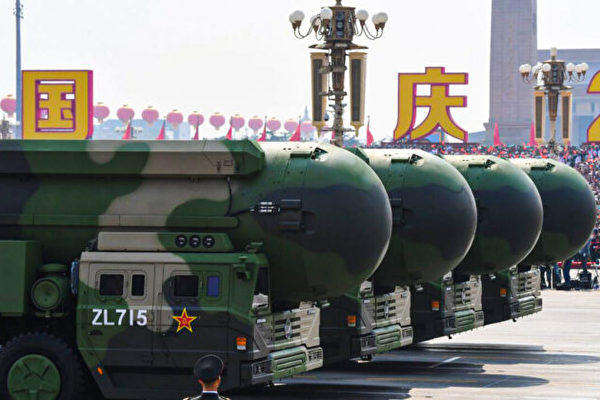The Pentagon released a new report on Wednesday, October 23, pointing out that the Chinese Communist Party (CCP) is rapidly developing new nuclear capabilities at an unprecedented pace. Despite the increase in nuclear capabilities, the CCP lacks experience in managing nuclear crises, which could increase global risks.
The report, titled “2024 Nuclear Challenge,” was prepared by the Defense Intelligence Agency’s (DIA) Office of Countering WMD. The DIA is responsible for providing intelligence on foreign militaries to enable the United States to prevent conflicts and decisively win wars when necessary. The DIA has a long history of producing defense intelligence summaries. In 1981, the DIA published the first “Soviet Military Power Report,” which was later translated into 8 languages and distributed worldwide.
According to the report by the DIA, despite repeated denials by CCP officials, substantial evidence indicates a significant increase in the CCP’s nuclear arsenal.
“China is engaging in the most rapid expansion and ambitious modernization of nuclear forces in its history—almost certainly driven by enduring strategic competition with the United States,” the report stated.
The Pentagon warns that the People’s Liberation Army’s (PLA) “nuclear theory” for utilizing these new capabilities may still be immature. Combined with the CCP’s history of poor information management and lack of experience in dealing with nuclear crises, there may be a period of “increased risk” in the coming years.
“In the next decade, Beijing’s pursuit of enhanced nuclear deterrence could increase the confidence of the CCP leadership—and the risk of miscalculation,” the report mentioned.
The report detailed how the CCP is establishing a land-based nuclear arsenal, including 300 missile silos, expanding its mobile intercontinental ballistic missile forces, and further developing its fleet of bombers capable of carrying air-launched ballistic missiles.
While the report also detailed the nuclear expansions by Russia and North Korea, the CCP undoubtedly remains the most scrutinized foreign adversary. The last time DIA published a similar report was in 2018 with “Global Nuclear Landscape.”
Comparing to the 2018 assessment, the CCP is expanding its nuclear arsenal at a much faster rate than previously predicted, aiming to possess at least 1,000 nuclear warheads by 2030, most of which will be deployed on systems capable of targeting the continental United States.
By contrast, the United States currently has approximately 3,750 nuclear warheads.
The report also suggested that China and Russia may deploy weapons with higher precision and better capabilities to bypass missile defense systems.
Additionally, the CCP may be developing “low-yield nuclear warheads” and increasing reserves of medium-range delivery systems, such as the DF-26 intermediate-range ballistic missile.
The report also warned that the invasion of Ukraine has exposed military weaknesses in Russia, which “may increase Moscow’s future reliance on nuclear capabilities.”
The report also outlined North Korea’s ambitions, noting that in 2022, North Korea conducted dozens of missile tests and simulated launching nuclear weapons to threaten the United States and its allies.
In early 2021, Kim Jong-un formulated a 5-year plan emphasizing the development of tactical nuclear weapons and the importance of developing “small nuclear weapons.” North Korea has demonstrated the ability to produce plutonium and highly enriched uranium, conducted nuclear tests, and developed new ballistic missile systems.
The Pentagon assessed that Iran currently does not possess nuclear weapons and has agreed not to seek the manufacture or possession of such weapons. However, since 2019, Iran has exceeded multiple limits of the Iran nuclear deal (JCPOA), including quantities and concentrations of uranium stockpiles, as well as restrictions on enrichment sites, number, and types of centrifuges.
The report evaluated that these violations of the agreement could shorten Iran’s timeline for manufacturing nuclear warheads.

